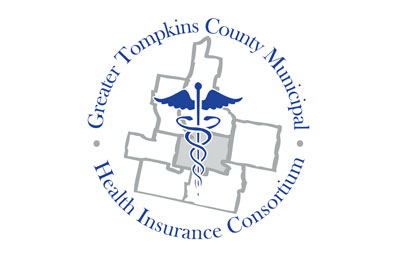
By Michael Koplinka-Loehr, Chair of the Tompkins County Legislature
Municipal officials in Tompkins County have a vision—that by pooling their resources through one or more consolidated benefit plans, municipalities can provide employee health insurance that is less expensive than they can each purchase on their own. Over the past two years, Tompkins County and its 16 municipalities have been working to build an inter-municipal health benefits consortium to achieve this objective, one which would include the County, the City of Ithaca, and 15 towns and villages located within the geographical and political boundaries of the County of Tompkins, New York (pop. 100,000.) The result is projected, over time, to produce millions of dollars in savings for Tompkins County taxpayers.
The opportunity to explore options was provided to Tompkins County municipalities by a more than quarter-million-dollar grant from the New York State Shared Municipal Services Incentive program, awarded in 2007. The grant offers technical and legal assistance to build a plan structure acceptable to the New York State Insurance Department.
Essentially, Tompkins County will build its own self-insured health insurance company administered by third party administrators, with oversight provided by a board of directors made up of municipal officials. The structure is similar to that used by area school districts, through the local Board of Cooperative Educational Services (BOCES) for their health benefits consortium, which has been in operation for the past two decades.
Cost savings
The reduction in costs will come from lower administrative fees, the elimination of insurance company commissions, a more aggressive claims trend, elimination of insurance company profits, and the ability to hold and invest excess funds in reserve accounts.
Protection
The protection is found in the same principle that is the foundation for an insurance company: the law of averages or law of large numbers. By being part of a large, credible pool of insured members, the employer benefits from the spreading of risk. While one municipality in a given year may experience higher losses than the average, in the consortium this result will be balanced with municipalities with better results than the average for that year. This produces annual increases that are more stable and more predictable over the long term.
Control
In our proposed consortium, the participants (all municipal corporations) will control finances of the plan through a board of directors, charged with development of the plan’s budget and premium equivalent rates. Through this approach, the board of directors will control the rate of increase and the timing of the budget decisions.
Currently, most municipalities receive their health insurance renewals in November or December for a January 1 renewal date, well past the budget development process for most municipal corporations and offering very little time for negotiation. In the consortium, municipalities will be provided regular financial reports and budget projections throughout the year. This will allow for decisions to be made well in advance of the local governments’ budget development process.
Operating Agreement
The consortium will be governed by and operated according to a municipal cooperative agreement, approved by resolution of each participating municipality. The agreement describes how the consortium will operate and the responsibilities and obligations of each municipal member to the plan and to the consortium. Each potential member is currently reviewing a draft of this agreement, and the draft has been submitted to the State Insurance Department for review and response.
Benefits Model
The goal is to develop cost-effective medical benefit plan offerings, which are equal to or better than the benefit plans each municipality currently offers to their active employees and retirees. A guiding principle of this project is that there be no diminishment in benefits to the covered members. Plan benefit designs will include indemnity-style plans, preferred provider organization (PPO) plans, some high deductible health plans, and Medicare-retiree plans. Premium equivalent rates will be established to account for the risk differences associated with each plan design.
Financial Model
All premiums will be paid to the consortium, where the monies will be pooled and used to cover plan expenses (paid claims, administrative expenses, insurances, legal fees, auditor fees, consultant fees, and other related costs.) Excess funds will be invested to generate interest earnings to benefit the program. All expenses, liabilities, and surplus funds will be “owned” by the participating municipalities, through the consortium, on a proportional basis.
Challenges
Tompkins County’s initial challenge was to bring together representatives from the county’s 17 municipalities in the same room and focused on the same topic, each with its own history and interests. This feat took about a year-and-a-half to accomplish. Naturally, municipalities are first concerned about their immediate needs within the municipality. Legislators, mayors, town supervisors, council members, and trustees are elected by constituents to manage municipal challenges, regardless of what their neighbors are doing. Tompkins County municipalities reached a huge milestone when, collectively, we realized that if the municipalities would group together, each would be strengthened by linking together common efforts and tackling common problems—in this case, shopping for health benefits collectively. The Tompkins County Council of Governments, made up of the County and all of its municipalities, was formed in 2006 and undertook the health benefits issue as one of its first initiatives.
We envision that, through our collaborative effort, our inter-municipal health benefits consortium will be in operation by January 1, 2010.
Additional information on the consortium project is posted online at the Tompkins County website at http://www.tompkinscountyny.gov. (Click the link entitled Shared Services Health Benefits Study.)
The Shared Municipal Services Incentive grant program is a program of the New York State Department of State, Office of Coastal, Local Government and Community Sustainability.